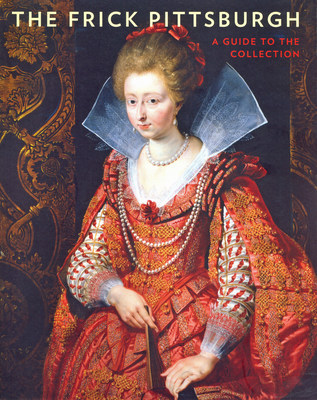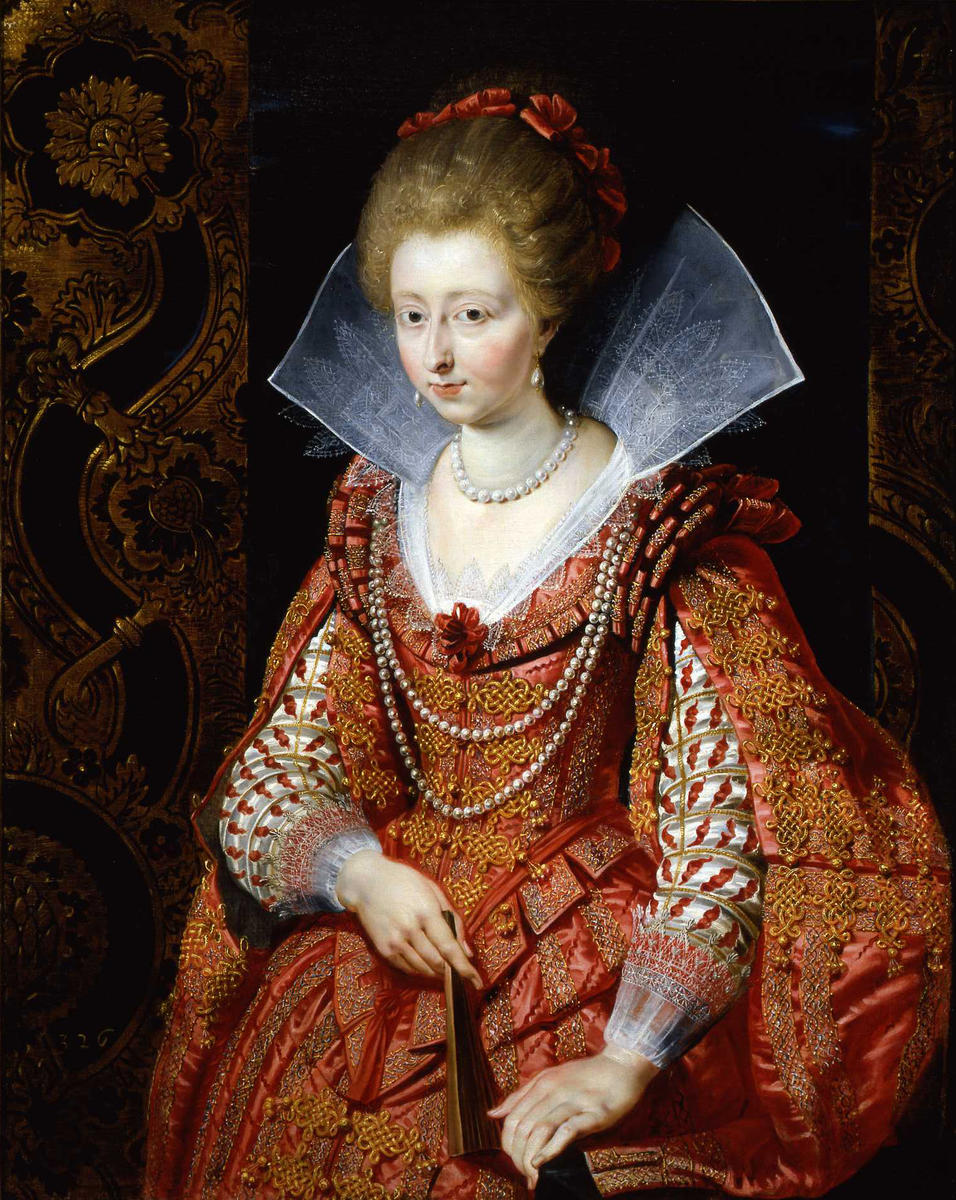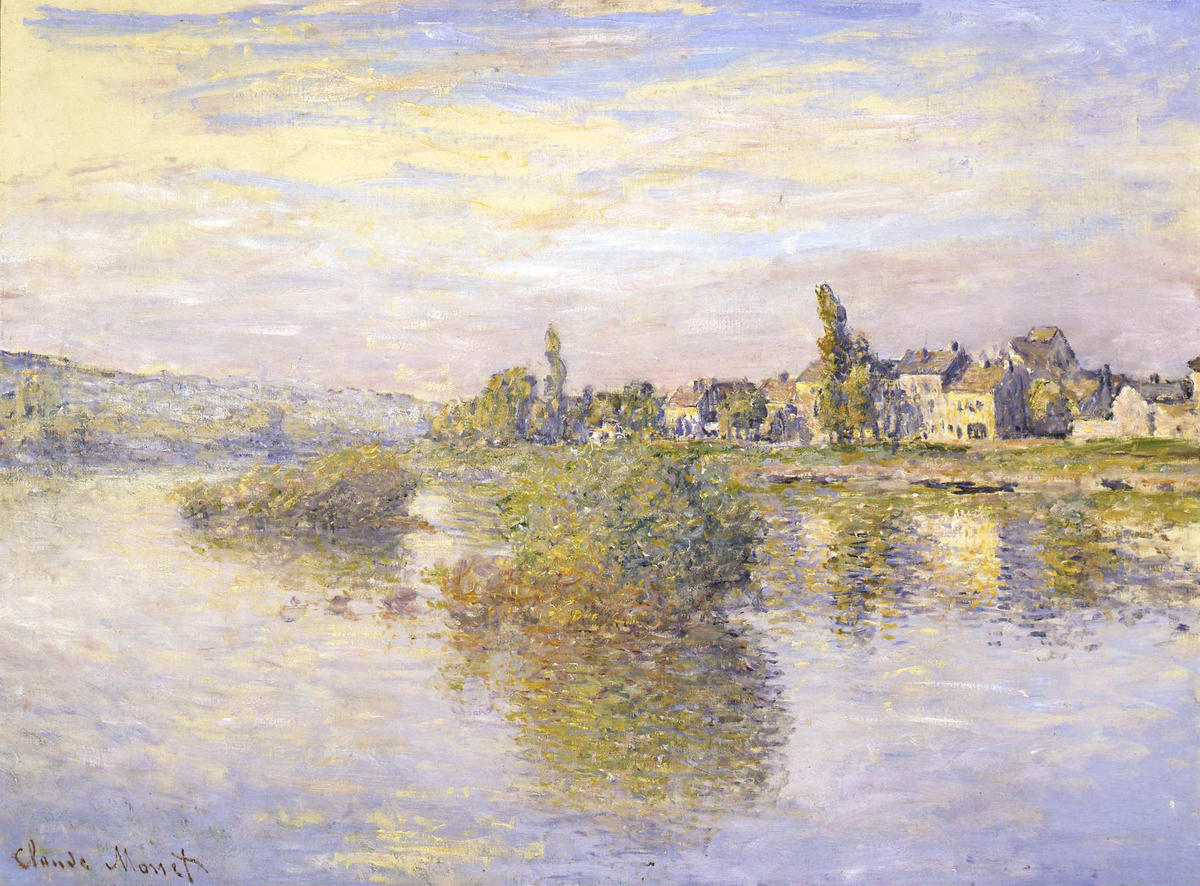October 29, 2016–May 14, 2017
This fall the exhibition galleries at The Frick Art Museum are being taken over by the permanent collection for the first exhibition in eight years to focus exclusively on the works of fine and decorative art in the Frick Art & Historical Center’s own collection. The Frick Collects: From Rubens to Monet celebrates the works of fine and decorative art at the heart of the Frick experience. It will be on view from October 29, 2016–May 14, 2017.
Designed to bring renewed attention to the depth and breadth of the Frick’s collection—from bachelor
purchases by Henry Clay Frick, through his daughter Helen’s work to ensure the creation of The Frick Art
Museum and the preservation of Clayton, and to more recent museum acquisitions, The Frick Collects:
From Rubens to Monet features many of the museum’s most significant objects and tells the story of the
Frick today and how it has evolved from its founding collections.
THE FRICK PITTSBURGH STORY: THE FORMATION OF THE COLLECTION
The Frick Pittsburgh’s story is a multifaceted one. It is a family story; it is a story about Pittsburgh; and it is a story about life at a time when Pittsburgh was the industrial heart of the United States. It is also a story about aspirations—aspirations to create a place of beauty, and for learning about history, and above all to provide public access and enjoyment of fine art and beautiful objects.
The collection at the Frick begins with the foundation of industrialist and world‐renowned art collector Henry Clay Frick (1849–1919)—his early collecting, his taste, and his roots in Pittsburgh, and continues through his daughter Helen Clay Frick (1888–1984), adding to his legacy her interest in preservation and her own particular love of 18th‐century French art and early Italian Renaissance painting.
The earliest acquisitions in the collection date to Henry Clay Frick’s bachelor days. Before his marriage (and for the first months after his marriage) he lived in downtown Pittsburgh at the fashionable Monongahela House. Mr. Frick bought his first paintings and decorative objects for his rooms there: an elaborate rococo revival clock and candelabra set purchased through Tiffany’s, an ebonized cabinet, and his first documented painting purchase, a landscape by Pittsburgh artist George Hetzel.
When they moved into Clayton, Henry Clay Frick and his wife furnished it as many young couples do— most of the purchases were new, fashionable and of the period. Frick had met his wife, Adelaide
The Frick Pittsburgh’s story is a multifaceted one. It is a family story; it is a story about Pittsburgh; and it is a story about life at a time when Pittsburgh was the industrial heart of the United States. It is also a story about aspirations—aspirations to create a place of beauty, and for learning about history, and above all to provide public access and enjoyment of fine art and beautiful objects.
The collection at the Frick begins with the foundation of industrialist and world‐renowned art collector Henry Clay Frick (1849–1919)—his early collecting, his taste, and his roots in Pittsburgh, and continues through his daughter Helen Clay Frick (1888–1984), adding to his legacy her interest in preservation and her own particular love of 18th‐century French art and early Italian Renaissance painting.
The earliest acquisitions in the collection date to Henry Clay Frick’s bachelor days. Before his marriage (and for the first months after his marriage) he lived in downtown Pittsburgh at the fashionable Monongahela House. Mr. Frick bought his first paintings and decorative objects for his rooms there: an elaborate rococo revival clock and candelabra set purchased through Tiffany’s, an ebonized cabinet, and his first documented painting purchase, a landscape by Pittsburgh artist George Hetzel.
When they moved into Clayton, Henry Clay Frick and his wife furnished it as many young couples do— most of the purchases were new, fashionable and of the period. Frick had met his wife, Adelaide
Howard Childs (1859–1931) in February 1881. Adelaide was the sixth daughter of the wealthy Pittsburgh
Childs family, who were manufacturers and importers of shoes and boots. For young couples during
America’s Gilded Age like the Fricks, art collecting was not simply a way to exercise taste and create a
suitable environment—although these were important considerations. More subtly the right objects
gave their owner a sense of history and pedigree. Collecting was a personal pleasure and an indicator of
status, discernment and good taste.
The rise in American collecting of this period also coincided with the establishment of the first museums in the country, including the Wadsworth Athenaeum of Hartford, Connecticut in 1842, the Museum of Fine Arts, Boston in 1870, New York’s Metropolitan Museum of Art in 1872, and in 1896, Pittsburgh’s Carnegie Institute. As the century progressed, forming collections and bequeathing them to the public became one way to put wealth and the accumulation of a collection to public service.
Although the Frick Pittsburgh is the direct legacy of Helen Clay Frick, it is also, by extension, the legacy of Henry Clay Frick. After his death, the family’s New York home and its contents were transformed into The Frick Collection. The family’s other homes, Clayton and Eagle Rock (in Prides Crossing, Massachusetts), were eventually inherited by Helen, and Clayton remained a Pittsburgh touchstone for the family, even after 1905, when their main residence was in New York. The paintings and decorative arts from Clayton and Eagle Rock form a unique reflection of Henry Clay Frick’s development as a collector. Any consideration of Henry Clay Frick as a collector must take into account his collection in Pittsburgh.
Helen Clay Frick’s vision led to the restoration of Clayton as a house museum and the construction of The Frick Art Museum, which was opened to the public in 1970. Helen even had the family cars and carriages carefully preserved and brought back to Pittsburgh from the family’s Massachusetts summer estate. When The Frick Art Museum opened it was devoted to Helen’s greatest interests—early Italian Renaissance paintings and 18th‐century French fine and decorative art.
Since Helen’s death in 1984, the collection has continued to develop—through generous donations and acquisitions that reflect the same quality as that evinced by the founding collection. One of the first gifts after Helen’s death came from the estate of a close friend of hers, Katherine McCook Knox. Knox had grown up nearby, the daughter of Willis McCook, one of Henry Clay Frick’s lawyers, and as an adult she had worked with Helen at the Frick Art Reference Library, developing an expertise in American painting.
The rise in American collecting of this period also coincided with the establishment of the first museums in the country, including the Wadsworth Athenaeum of Hartford, Connecticut in 1842, the Museum of Fine Arts, Boston in 1870, New York’s Metropolitan Museum of Art in 1872, and in 1896, Pittsburgh’s Carnegie Institute. As the century progressed, forming collections and bequeathing them to the public became one way to put wealth and the accumulation of a collection to public service.
Although the Frick Pittsburgh is the direct legacy of Helen Clay Frick, it is also, by extension, the legacy of Henry Clay Frick. After his death, the family’s New York home and its contents were transformed into The Frick Collection. The family’s other homes, Clayton and Eagle Rock (in Prides Crossing, Massachusetts), were eventually inherited by Helen, and Clayton remained a Pittsburgh touchstone for the family, even after 1905, when their main residence was in New York. The paintings and decorative arts from Clayton and Eagle Rock form a unique reflection of Henry Clay Frick’s development as a collector. Any consideration of Henry Clay Frick as a collector must take into account his collection in Pittsburgh.
Helen Clay Frick’s vision led to the restoration of Clayton as a house museum and the construction of The Frick Art Museum, which was opened to the public in 1970. Helen even had the family cars and carriages carefully preserved and brought back to Pittsburgh from the family’s Massachusetts summer estate. When The Frick Art Museum opened it was devoted to Helen’s greatest interests—early Italian Renaissance paintings and 18th‐century French fine and decorative art.
Since Helen’s death in 1984, the collection has continued to develop—through generous donations and acquisitions that reflect the same quality as that evinced by the founding collection. One of the first gifts after Helen’s death came from the estate of a close friend of hers, Katherine McCook Knox. Knox had grown up nearby, the daughter of Willis McCook, one of Henry Clay Frick’s lawyers, and as an adult she had worked with Helen at the Frick Art Reference Library, developing an expertise in American painting.
It is fitting then, that her gift to Helen Clay Frick’s Pittsburgh museum was an iconic American genre
painting by Eastman Johnson, The Wounded Drummer Boy, which will be on display as part of the
exhibition for the first time since 2014.
The Frick Art Museum also owns significant pieces of contemporary art, including a Sèvres porcelain Madame de Pompadour soup tureen designed by Cindy Sherman, featuring the artist’s characteristic role‐playing with a self‐portrait in the guise of arts patron, porcelain lover, and mistress to Louis XV, Madame de Pompadour. Contemporary art has also been supported through The Frick Art Museum’s exhibition program, which since the year 2000 has periodically invited artists to make work inspired by the collections and experiences of visiting the multi‐acre site.
ABOUT THE EXHIBITION
The exhibition, which includes 42 paintings, 26 decorative arts pieces, nine pieces of furniture, six works on paper, and three examples of sculpture, is organized by acquisition date, allowing visitors to perceive the development of the collection, from Henry Clay Frick’s earliest purchases to recent museum acquisitions. Thematic sections include: From Apartment to Starter Home: The Collecting Begins, covering the years 1881 to 1892; The Confident Collector, encompassing purchases made through the 1890s to around 1906; Collecting with Ambition, which includes important purchases made from other collections and covers the years when Frick was purchasing with the intention of creating a public gallery; Her Father’s Daughter, which elucidates Helen Clay Frick’s collecting interests; and, Expanding the Legacy, which includes the establishment of The Frick Art Museum and acquisitions made since the museum’s founding.
A selection of the Frick’s extraordinary works on paper by Jean‐François Millet will be included in the exhibition. These fragile works in pastel and charcoal are displayed rarely and for limited time to avoid handling and light exposure. Here, the Millets from a collection within the collection, and connect to Frick’s other acquisitions by artists of the Barbizon school. Millet’s late‐life pastel landscapes show him embracing color and atmosphere, closely connecting his approach to that of the younger Impressionist artists who emerged a decade later.
The Frick Art Museum also owns significant pieces of contemporary art, including a Sèvres porcelain Madame de Pompadour soup tureen designed by Cindy Sherman, featuring the artist’s characteristic role‐playing with a self‐portrait in the guise of arts patron, porcelain lover, and mistress to Louis XV, Madame de Pompadour. Contemporary art has also been supported through The Frick Art Museum’s exhibition program, which since the year 2000 has periodically invited artists to make work inspired by the collections and experiences of visiting the multi‐acre site.
ABOUT THE EXHIBITION
The exhibition, which includes 42 paintings, 26 decorative arts pieces, nine pieces of furniture, six works on paper, and three examples of sculpture, is organized by acquisition date, allowing visitors to perceive the development of the collection, from Henry Clay Frick’s earliest purchases to recent museum acquisitions. Thematic sections include: From Apartment to Starter Home: The Collecting Begins, covering the years 1881 to 1892; The Confident Collector, encompassing purchases made through the 1890s to around 1906; Collecting with Ambition, which includes important purchases made from other collections and covers the years when Frick was purchasing with the intention of creating a public gallery; Her Father’s Daughter, which elucidates Helen Clay Frick’s collecting interests; and, Expanding the Legacy, which includes the establishment of The Frick Art Museum and acquisitions made since the museum’s founding.
A selection of the Frick’s extraordinary works on paper by Jean‐François Millet will be included in the exhibition. These fragile works in pastel and charcoal are displayed rarely and for limited time to avoid handling and light exposure. Here, the Millets from a collection within the collection, and connect to Frick’s other acquisitions by artists of the Barbizon school. Millet’s late‐life pastel landscapes show him embracing color and atmosphere, closely connecting his approach to that of the younger Impressionist artists who emerged a decade later.
NEW GUIDE TO THE COLLECTION
Accompanying The Frick Collects: Rubens to Monet is a new published guide to the collection, produced in collaboration with Scala, specialists in museum publications. The guide features an introduction by Frick Director Robin Nicholson, and contextual essays by Director of Curatorial Affairs Sarah Hall and Associate Curator of Decorative Arts Dawn Reid Brean.
Peter Paul Rubens, Portrait of Charlotte-Marguerite de Montmorency, Princess of Condé, c. 1610. Oil on canvas. Frick Art & Historical Center.
Claude Monet (1840–1926) Banks of the Seine at Lavacourt (Bords de la Seine a Lavacourt), 1879. Oil on canvas. Frick Art & Historical Center
Arthur Devis (1712–1787), Sir Joshua Vanneck and His Family, 1752. Oil on canvas. Frick Art & Historical Center.
Francesco Guardi (1712–1793), View on the Grand Canal at San Geremia, Venice, 1760–1765. Oil on canvas. Frick Art & Historical Center.
Master
of the Scrovegni Chapel Presbytery (Paduan, early 14th century) Madonna and Child
with Saints, Scenes from the Life of Christ and the Life of the Virgin, 1308. Tempera on panels
Bernardo
Daddi, Madonna and Child
with Saint Francis and a Saint-Bishop; Saints Peter and Paul; the Crucifixion; 1330s. Triptych: tempora on
panels
Giovanni
di Paolo, Nativity, 1428-1440. Oil on canvas
Sassetta, The Virgin of
Humility Crowned by Two Angels, 1440s. Tempera on panel









